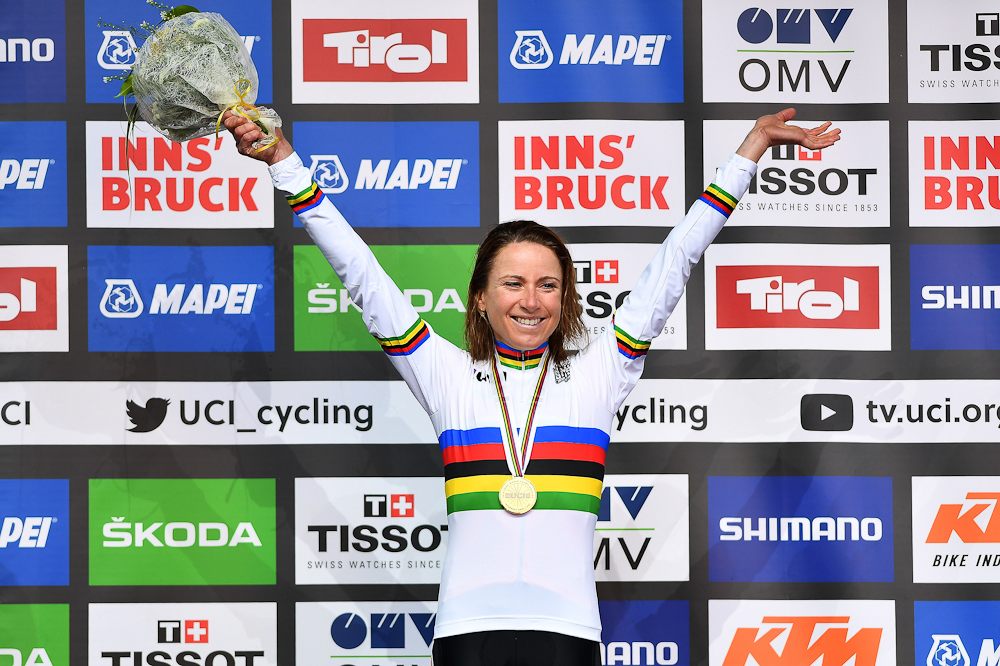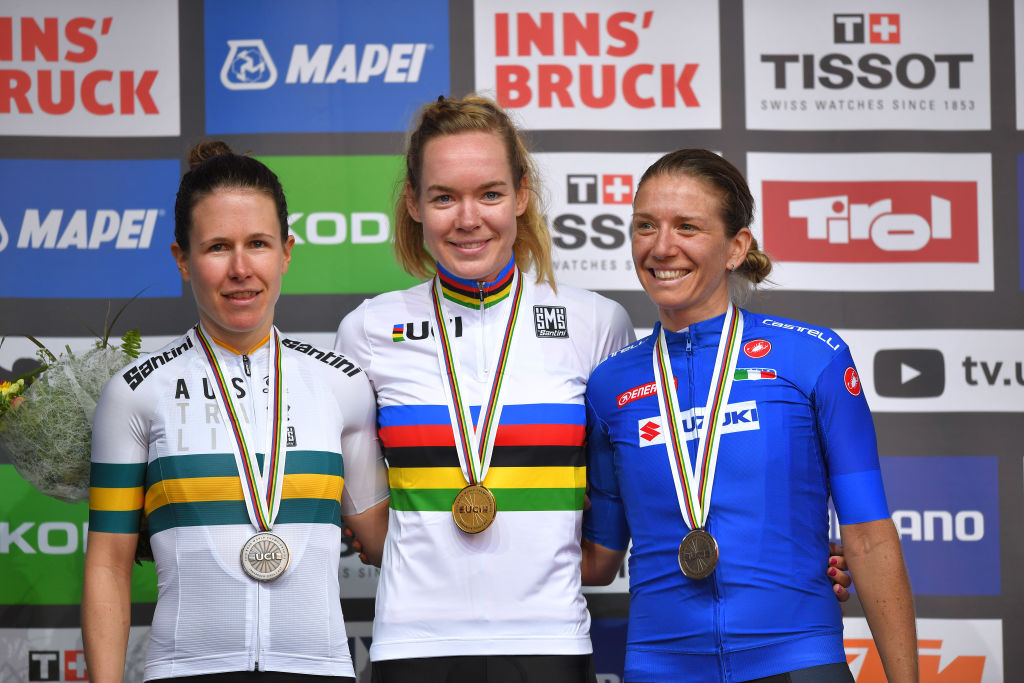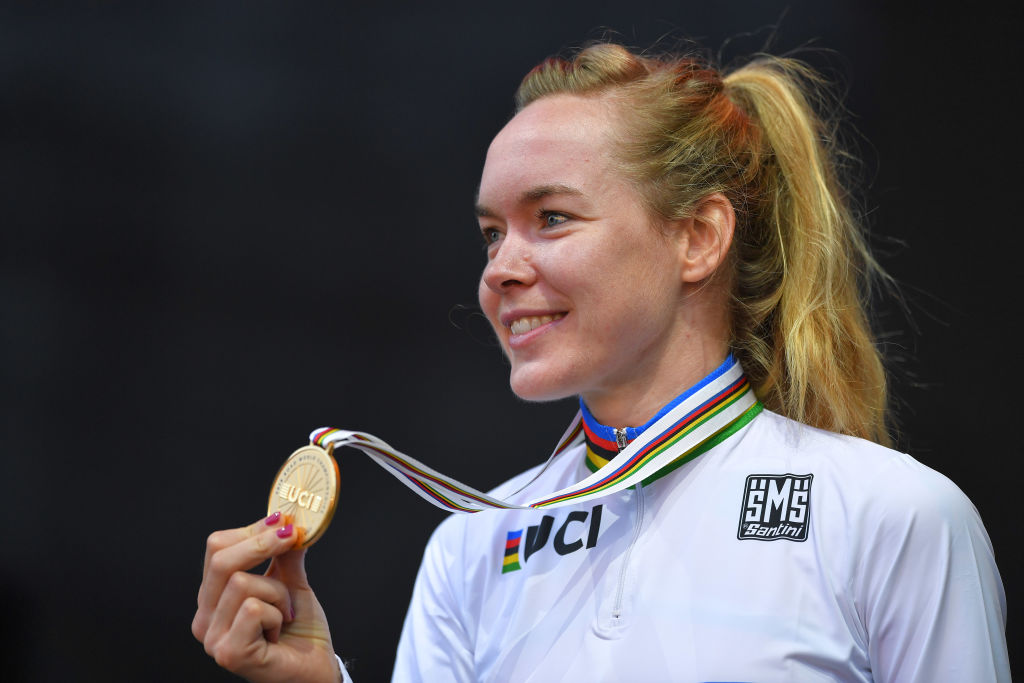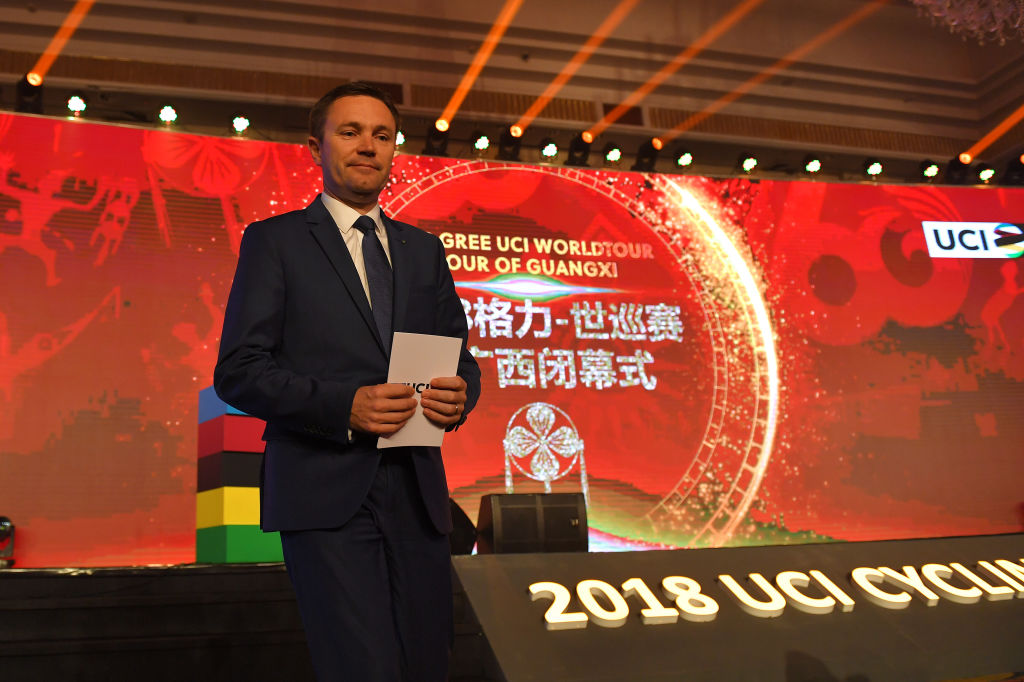UCI to boost women's prize money between 2019 and 2022
Governing body reveals further details of new WorldTour tiered system





The UCI has said that it will contribute a 10 per cent increase in prize money at women’s races between 2019 and 2022, with 50 per cent of the total prize money designated for the general classification in stages races from 2022, bringing it in line with men’s races.
The announcement comes as the UCI unveiled further details of the major reforms to come in women’s cycling over the next four seasons, following its WorldTour seminar at the start of last month.
The information laid out on the UCI’s website reiterated the progression of the minimum salary that will be introduced next year, the benefits to be included in the new contracts, the awarding of WorldTour licences, and race participation.
As well as the increase in prize money, more riders will be able to earn it, with prizes available for 16th to 20th place in stage races. The UCI also announced that both UCI Women’s WorldTeams and Continental Teams will receive a participation allowance for WorldTour and ProSeries races.
The introduction of a minimum salary was confirmed by the UCI over the summer and further details emerged in the subsequent months. In its press release, the sport's global governing body reaffirmed plans to have a minimum of €15,000 next season, with that to increase to €20,000 in 2021 and €27,500 by 2022. By 2023, the minimum salary is set to be brought in line with men’s Pro Continental teams. The UCI also revealed that a neo-pro status will be introduced for Women’s WorldTeams for the 2023 season.
The introduction of a tiered system brings better contracts and additional benefits for the WorldTour riders. The introduction of maternity cover has already been announced and will be introduced in 2020, while a number of other benefits will be phased in between 2020 and 2022. Of those to come in immediately in 2020 are health insurance, hospitalisation and repatriation insurance, accident insurance and life insurance. Permanent invalidity insurance will be introduced in 2021, along with expenses not paid by social security. The last benefit to be introduced in 2022 will be a pension savings scheme.
Teams will be limited to a maximum of 75 days of racing per rider, per year, not including appearances for national teams and any individual appearances. Riders will also be entitled to 30 days holiday and sickness cover.
Get The Leadout Newsletter
The latest race content, interviews, features, reviews and expert buying guides, direct to your inbox!

A new tiered system
As well as the new benefits and prize money for riders, the UCI described how the new Women’s WorldTour will look when it comes into effect in January next year.
At present, all women’s teams sit under the same classification and have the same designation as men’s Continental Teams. The new development will see a tiered system for the first time in women’s cycling.
At the top will be the Women’s WorldTeams, with the level below being renamed as Women’s Continental Teams. Women’s WorldTeams will consist of between nine and 16 riders in 2020 and 2021, and between 10 and 20 by 2022. Women’s Continental Teams will be made up of between eight and 16 riders.
During the World Championships in Innsbruck last September, UCI president David Lappartient announced his intention to have five teams promoted to WorldTeam status in 2020, with that to become 10 the following year and 15 by 2022. However, the new details show that the UCI is hopeful of attracting more teams to apply in the first year. According to the press release, a maximum of eight teams will be issued with a licence in 2020 and that will increase to 12 the following year, while the intention remains to have a maximum of 15 by the end of the process.
Licences will be awarded on the basis of sporting, ethical, financial and administrative criteria, which will have additional criteria added in 2021. Those that successfully apply in 2020 will receive a four-year licence, with that decreasing by one year each year so that they all run out in 2024.
From 2024, the ability to apply for a licence and the length of it will be determined by the WorldTeam’s ranking – the ranking system will remain as it is this season. The top-five teams will be able to apply for four-year licences, while 6-10 can only obtain three-year licences and that will reduce to two for the 11-15 ranked teams. The lowest ranked WorldTeam could see themselves demoted if a Continental Team is deemed, under the above criteria, to be better. In the case of a tie, the sporting criteria will take precedence.
In addition to the other changes, Women’s WorldTeams will be allowed to take on stagiaire riders between August 1 and December 31.
New race classification
To go with the new tiered system are some new race classifications, which will bring the women in line with some of the changes on the men’s side.
The Women’s WorldTour will remain the same and will have a maximum of 23 events, the current number of races on the 2019 Women’s WorldTour calendar. Below that will be the UCI ProSeries, with 20-30 events, then Class 1 with 25 events and Class 2 with 30 events.
Organisers of WorldTour and ProSeries races will have to adhere to certain organisational standards. The UCI points to television production as a key factor, something that has been a sticking point for women’s cycling for many years – though it has improved recently.
WorldTeams are not required to attend all WorldTour races, as is the case at the moment, though organisers must invite all 15 (from 2022) with a minimum of eight required to participate. After that, organisers can invite between 0-16 Continental teams, depending on how many WorldTeams accept their invitation. The peloton can be made up of 15-24 teams with 6-7 riders in each team.
Organisers of ProSeries races are allowed to invite between 4-10 WorldTeams. They are then able to invite as many or few Continental teams, national teams, plus up to two regional and club teams. Again, the peloton can consist of between 15-24 teams of 6-7 riders.